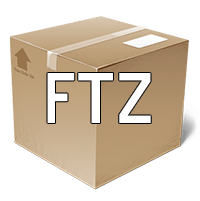The Bottom Line: Underused supply chain process options
The Bottom Line: Underused supply chain process options
Excerpt from: American Shipper | By: Tom Cook | April 28, 2016
Excellent opportunities exist for companies competing in global trade to leverage their business models by reviewing their supply chain process options. One option is the use of foreign trade zones (FTZs), not only here in the United States but also available in most major trading centers of the world.
The primary reasons for considering FTZs in your global supply chain are:
- Ease of moving freight to and from the borders between trading countries.
- Reduction or elimination of duties, taxes and other import/export costs.
- Financial incentives on a local level.
- Lower “landed costs” in your import/export business model.
There are other advantages that may be unique to geographic location and industry verticals. The automotive industry, which is dominated by foreign competition, has been one of the major industries to capitalize on FTZs in the United States, as well as abroad.
 The basic FTZ model allows a company to manufacture or assemble finished products in a country overseas using local labor for the specific purpose of reducing landed cost.
The basic FTZ model allows a company to manufacture or assemble finished products in a country overseas using local labor for the specific purpose of reducing landed cost.
For example, a German automaker sells a car in the United States for $50,000. Duties and taxes, however, can add another $1,500 to the landed cost. Through the use of a FTZ in the United States that same German automaker can import parts from Germany and use U.S labor to work in its U.S. factory. Upon entry into the U.S. FTZ, duties and taxes on the parts are deferred. Once the car is assembled and leaves the FTZ for sale, that’s when the deferred portion of the tax and duties are paid. If labor costs make up 50 percent of the $50,000 value, only $25,000 is applicable to duties and taxes.
This model reduces the landed cost by roughly $750.00 per vehicle. Compare this against 200,000 units and the savings could amount to more than $150 million a year.
There are numerous other benefits to FTZs that could be considered in other business model assessments. More recent options allow high volume importers to have their goods pass through FTZs as they transit from the gateway through to their warehouses and distribution facilities. This step allows a “weekly manifest clearance,” which reduces entry fees and Merchandise Processing Fees (MPF) with U.S. Customs and Border Protection, creating a significant financial savings impacting landed cost.
Bonded warehouses are another supply chain option which allows importers and exporters to temporarily hold freight where the import is deferred, along with duties, taxes and other import costs, until such time the goods enter the country or are exported to another country.
For example, let’s take a Cleveland-based electronics distributor importing consumer music products from Asia, totaling more than $200 million a year and with an average duty rate of 4.5 percent. About 20 percent of the products are then re-exported to Canada, the Caribbean and Latin America. Under their current supply chain model, the distributor uses CBP’s drawback program to obtain up to 99 percent of the duties and taxes for those exports, totaling $1.8 million annually.
While drawback is a great program, it can be arduous and costly to manage, and takes time to receive the refund of duties.
As an alternative, the distributor can apply to CBP to make its warehousing facility a bonded location. This will defer the duties and taxes on those goods entering the warehouse to the point in time when they are extracted from the facility. Additionally, 20 percent of the goods that are re-exported enter and leave the United States in bond and no duties or taxes are obligated to be paid, providing significant savings in supply chain costs.
Bonded warehouses provide additional benefits, but the operations permitted in a bonded warehouse are limited to sorting, weighing and repacking. If the goods enter the warehouse as a widget, they must leave as a widget.
Foreign trade agreements (FTAs) offer numerous advantages to both importers and exporters. Currently the United States participates in more than 13 agreements, with numerous others pending. The most well-known FTA is NAFTA, which has undergone considerable scrutiny in the 2016 presidential election debates. When the three participating countries—the United States, Canada and Mexico—trade with each another, there is a serious reduction of duties and taxes on qualified goods and merchandise.
The most advantageous benefit of FTAs are the free movement of goods between participating countries where duties and taxes are reduced or eliminated.
“Near sourcing” is a recent phenomenon in global trade where trade is coming back to our NAFTA partners or the United States. FTAs provide a more level playing field, particularly against lower Asia-based sourcing models.
Lower freight costs, reduced lead times and elimination of duties and taxes can very easily make manufacturing in Mexico or a U.S.-based FTZ a much more competitive option, thereby leveraging critical logistics business model options.
Cook is a global supply chain professional, author of more than 19 books on global trade, and managing director of Blue Tiger International. He can be reached by email at tomcook@bluetigerintl.com.
Free Webinar Opportunity
 Question and Answer Forum: Foreign Trade Zones (FTZ)
Question and Answer Forum: Foreign Trade Zones (FTZ)
An FTZ comes with many benefits including potential reduction in inventory, cost savings, and more. In one hour or less, learn about what a FTZ is, how it works, who should apply, how to run it and how you can benefit.
Register Now
